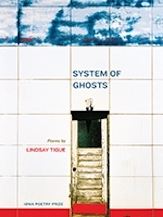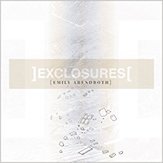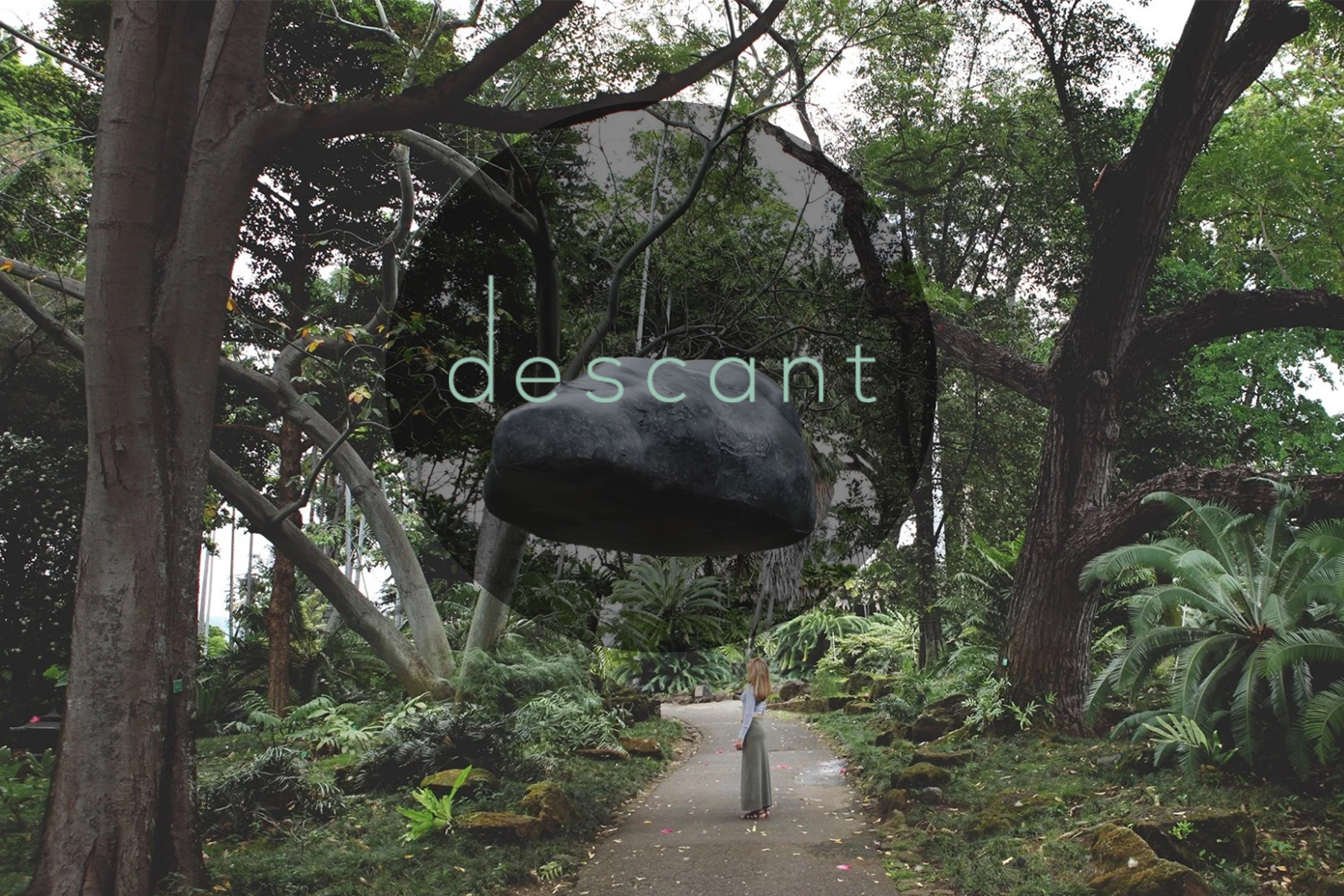Review by Kristina Marie Darling

In much of contemporary poetry, landscape becomes a convenient vehicle for dramatizing the inner life of the speaker. And so the florid hills that surround us, with their clean lines and small enclosures, serve as a simple metonymy for complex emotional and intellectual discoveries. What’s more, these narratives are related to us from a distance, their pastoral mode offering a method for dealing with affect at some degree of remove.
Three recent collections of poetry are a rare exception to this disconcerting trend in contemporary poetry. Lisa Robertson’s The Weather, Lindsey Tigue’s System of Ghosts, and Emily Abendroth’s Exclosures do not merely consider landscape as a dramatized descriptive strategy. Instead, the progression of the book-length sequence is synonymous with the creation of a rich linguistic and psychic terrain. Certainly, the pastoral mode provides a vocabulary for sketching these beautiful and treacherous textual expanses. Yet the work of building this imaginative topography is not done through exposition, but rather, it is accomplished by each sequence’s innovative and singular form.

Indeed, Abendroth, Tigue, and Robertson each present us with structures as alive with sound as they are with emotion, poems as unruly on the printed page as any true wilderness. To experience each book, the reader must fully inhabit a luminous and skillfully constructed architecture. The end result is not a simple extended metaphor, but rather, a richly imagined world—in which language, mind, landscape are inextricably bound—and in which the reader is fully and willingly engulfed.
* * *

In Abendroth’s Exclosures, experimentation with form serves to create a textual terrain that is constantly expanding. This gesture may be read in part as a metaphor for the speaker’s affect as she grieves a political structure that is unraveling before her. Yet Abendroth also prompts us to consider the ways landscape becomes tangled in multiple (and often incommensurable) societal infrastructures.
She writes, for example, in “Exclosure 9,”
“The [Onsite check-cashing franchise] does not have a monopoly on exclusionary logistics.”
[Elk’s Club]
[Offshore Military Base]
[Nuclear Family]
[Academic Community]
[Bail Bonds Market]
[Single Professionals Network]
[Sensor-Activated Motion Detector]
The landscape that the speaker traverses is borne into the machinery of surveillance, commerce, and social life. Through her intricately tiered lineation, Abendroth reveals the multiplicity housed within any given physical space. Certainly, one might read this poem as an exercise in choice, in which we sort through the various options with which we are presented (“Elk’s Club,” “Offshore Military Base,” etc.). Abendroth’s poems, however, prove to be a much more complex constructions. She prompts us to consider the various types of cultural machinery that overlap and intersect in any given terrain.
Here, the infrastructure of “national security” casts a dim shadow over the “nuclear family,” and echoes as Abendroth bears it in language. Similarly, the jargon of the “academic community” is portrayed in discomfiting proximity to poverty’s looming architectures. There is no longer any single topography, but multiple courses being charted within the same physical space. For Abendroth, inhabiting any terrain also involves negotiating the structures of power and authority that are enacted within its boundaries.
Indeed, the linguistic topography of Exclosures is more palimpsest than pastoral, as Abendroth inscribes, erases, and reinscribes the structures of power and powerlessness, voicelessness and protest. In doing so, she reminds us, “There’s no combination that isn’t mutually contagious.”
* * *
Lindsey Tigue’s System of Ghosts offers a similar unearthing of the economic and political infrastructures that inform our experience of physical spaces. Presented as a sequence of skillfully linked individual poems, the collection returns again and again to the question of solitude, the ways that urban industrial modernity can render a landscape suddenly and startlingly desolate. On the level of the sequence, the architecture of the collection enacts the depersonalizing economic system that is being described, each piece functioning as a small shimmering gear in a larger textual machine.
In many ways, this notion of poem as system, language as commercialized landscape, is enacted in Tigue’s artful transitions from one poem to the next. She writes, for instance, at the end of “Solitary, Imaginary,”
I act like I’m not thrilled, that I don’t love
to meet neighbors in the street. Do you
have power? I ask. Do you have light?
Here technology’s failure is synonymous with the emergence of a community. Tigue makes it clear, however, that this power outage offers only a brief respite from “claimed settlements” and “trucks unloading.” This piece leads seamlessly into “How to Adjust Time Zones,” a lyric exploration of how technology has fragmented our sense of temporality, space, and relationships. She writes,
Before the railroad,
People based time
on the natural
movement of the sun.
Now, my sister lives
two hours behind me.
Though technology connects us in spite of our geographic distance, it also propels us further into isolation, each individual inhabiting a singular and solitary psychic landscape. What is perhaps most fascinating about this collection is the way it simultaneously enacts and resists the systematization that is being described.
Like Abendroth’s Exclosures, the book provocatively calls attention to itself as a commodity, interrogating the circumstances of its own making. The reader, too, is implicated in sustaining this dangerous machinery.
* * *
Robertson’s collection ultimately resists this impulse to treat language as commodity, as an object to be bought and sold. Indeed, there is nothing quite as non-utilitarian as the weather. Perhaps for this reason, Robertson’s The Weather emulates this very impracticality, offering us language as atmosphere, as ambient sound. The end result is a textual terrain that resists semantic meaning, as this mindset represents a desire for language to remain merely serviceable.
Robertson’s rhythmic meaning-making, and her engagement with language as a raw material, results in a dangerous proliferation of possibility, similar to Abendroth’s ever-expanding textual dreamscapes. Much like the weather itself, the shifting possibilities of Robertson’s imaginative topography prove to be as treacherous as they are enlivening. She writes,
Cheerful, tender, civil, lilac colours; we anticipate the never-the-less. Clear blue but yellowish in the northeast; we sit and explore. Clouded toward the south; we will not be made to mean by a space. We’ll do newness. Crickets accumulate; our expression of atmosphere has carnal intentions…
Here Robertson conceives of language as a material medium, allowing the alliterative music of “Cheerful, tender, civil, lilac colours” to create the same ambient and immersive atmosphere as the “clouded” skies and “clear blue” backdrop that she describes. As the weather inevitably shifts, so too does Robertson’s linguistic rendering of its movements. “A very wet day” turns to an “alibi,” “a church,” and later, the “sun situated just so.”
At the end of the sequence, we are left with only one imperative: “go as the robin / as the songsparrow go / as the robin as the song.” As Robertson ushers her linguistic tapestry into an even more sweeping terrain, we are reminded that it is language that gives structure to landscape, that lends music and meaning to that “anarchy,” that “untranslatability,” that “din.”
Kristina Marie Darling is the author of over twenty books of poetry, most recently DARK HORSE (C&R Press, 2017). Her awards include three Yaddo residencies, a Hawthornden Castle Fellowship, and multiple residencies at the American Academy in Rome, as well as grants from the Whiting Foundation and Harvard University’s Kittredge Fund. She has published creative work in New American Writing, Nimrod, The Mid-American Review, Poetry International, Passages North, and many other magazines. Her critical essays appear in The Gettysburg Review, Agni, The Iowa Review, The Los Angeles Review of Books, The Literary Review, and elsewhere. She is Editor-in-Chief of Tupelo Quarterly and Grants Specialist at Black Ocean.
